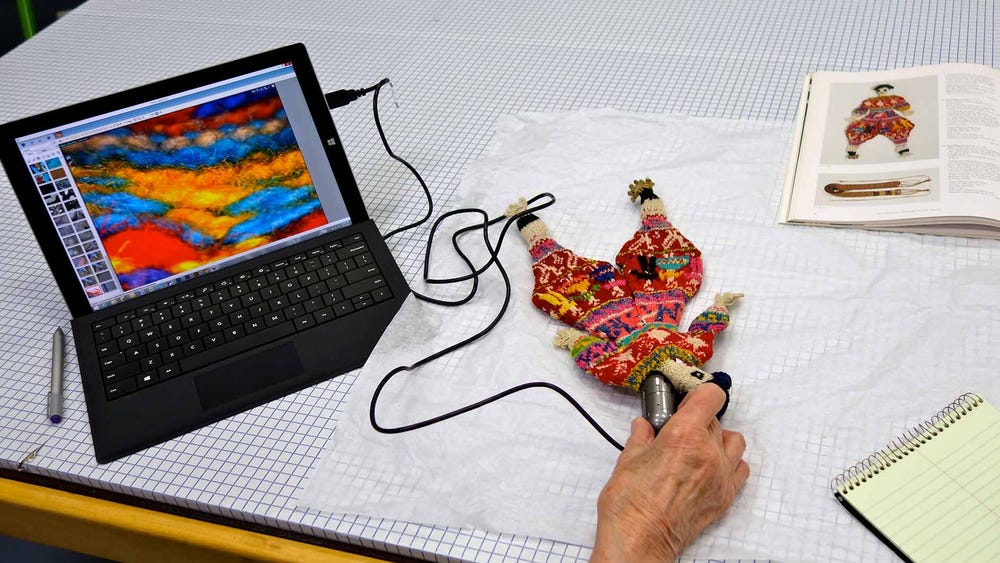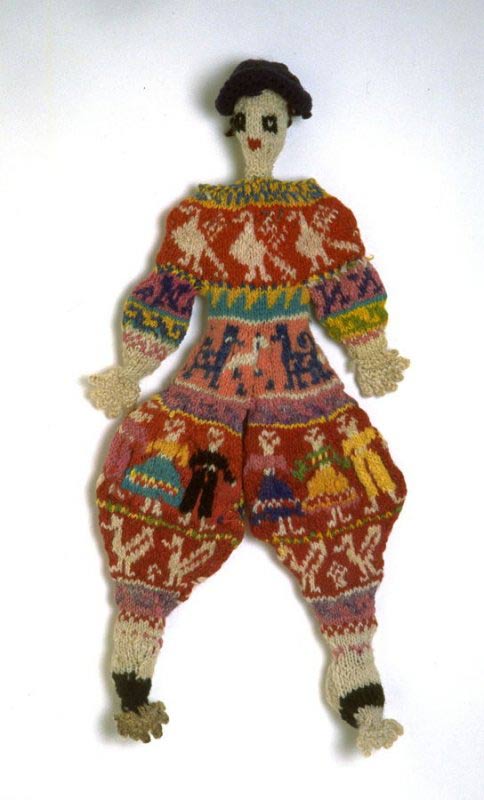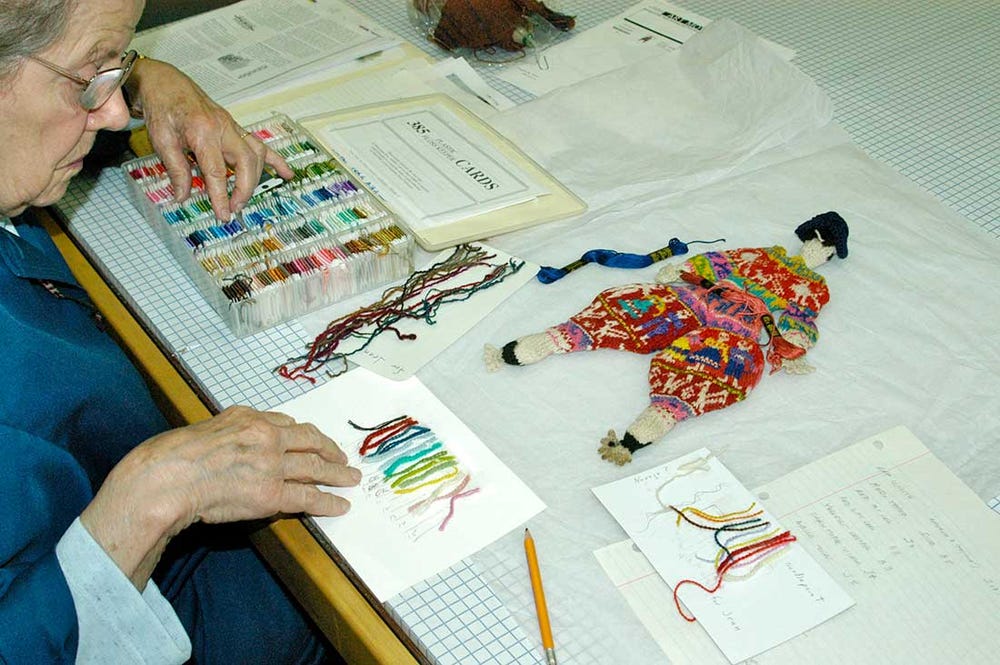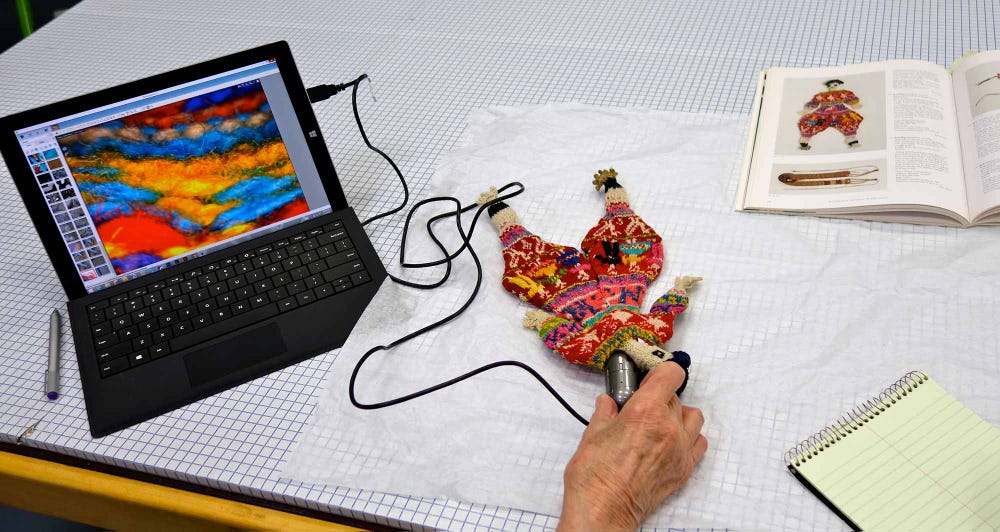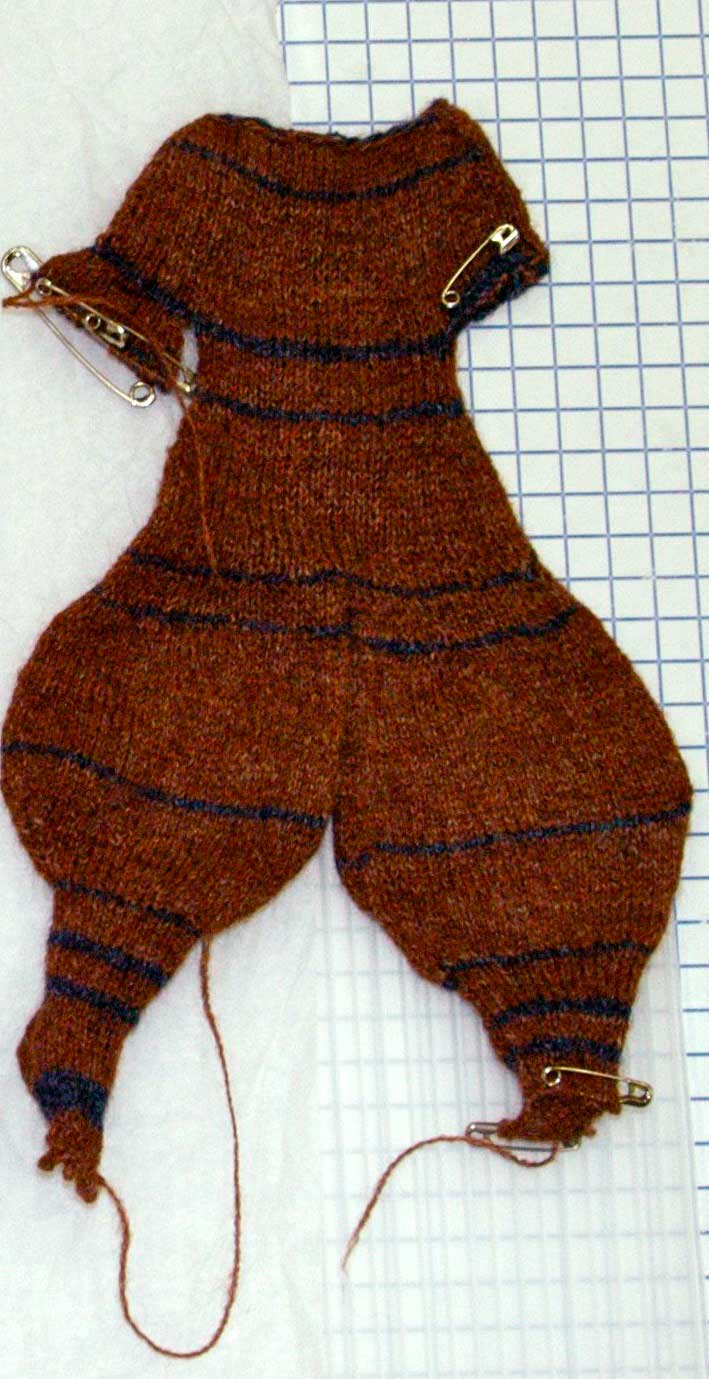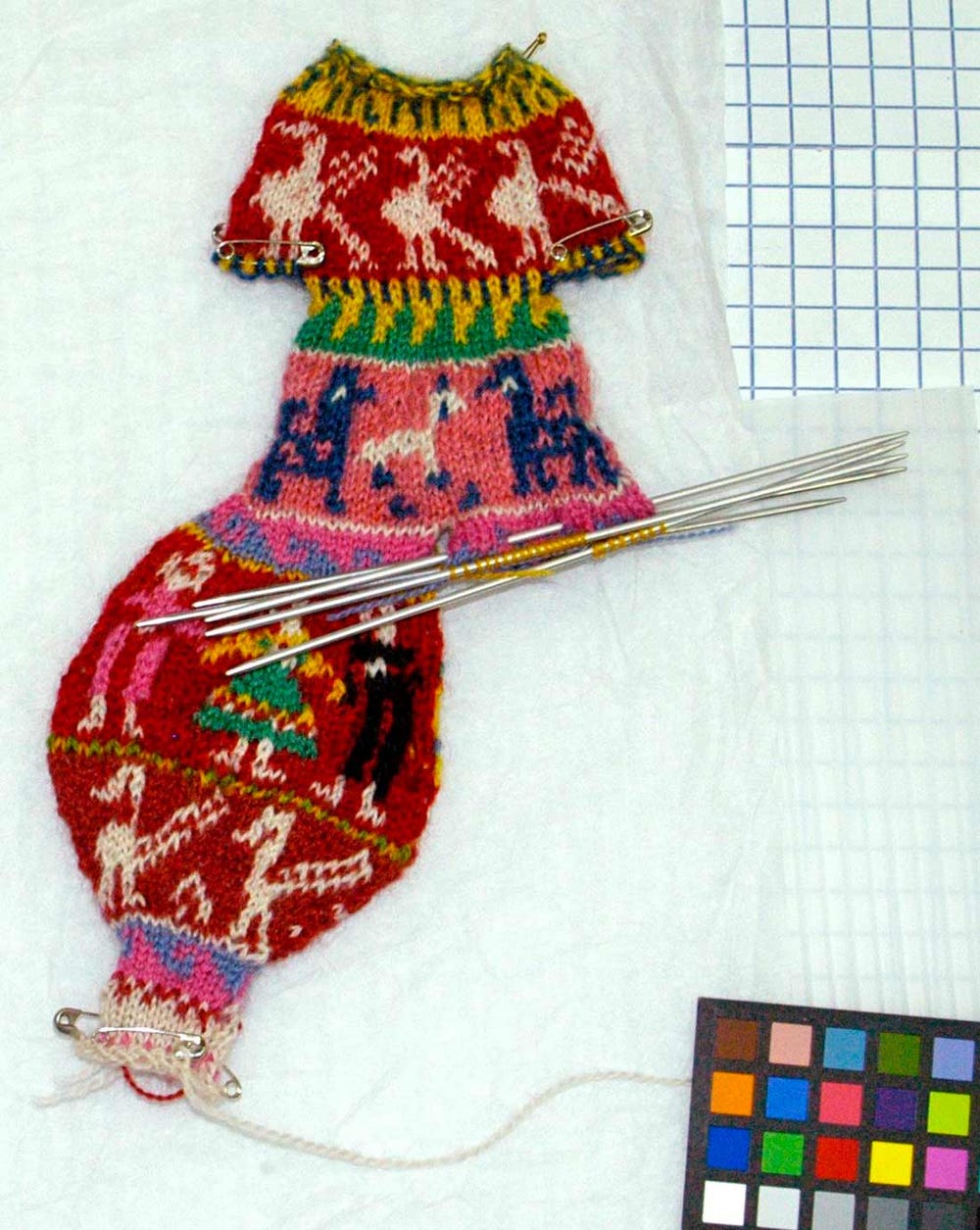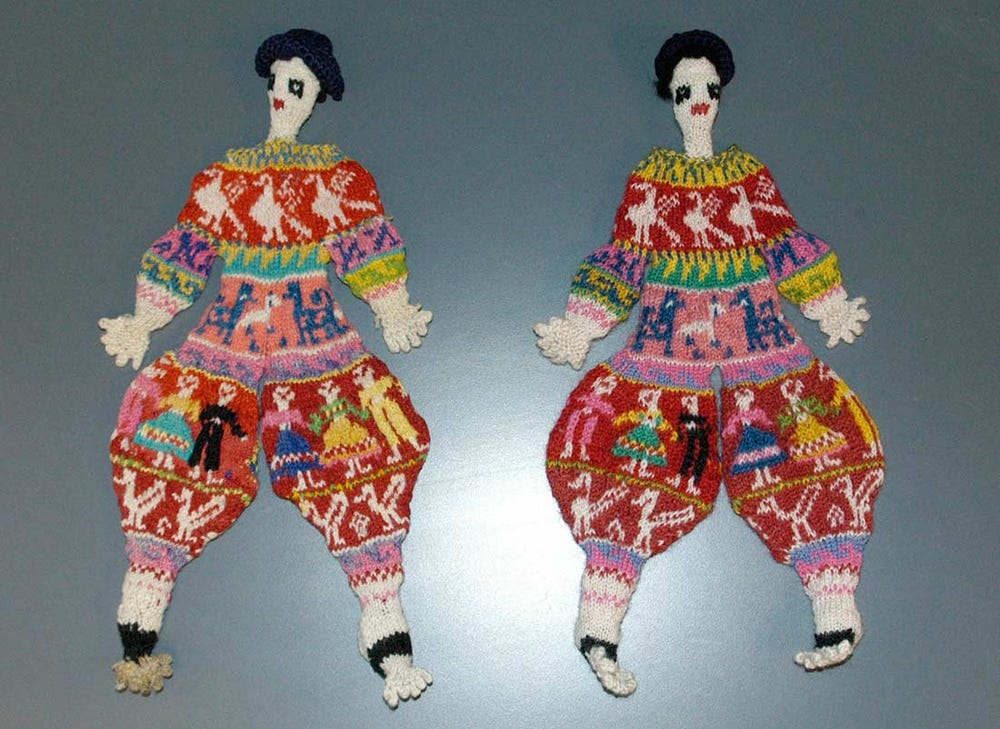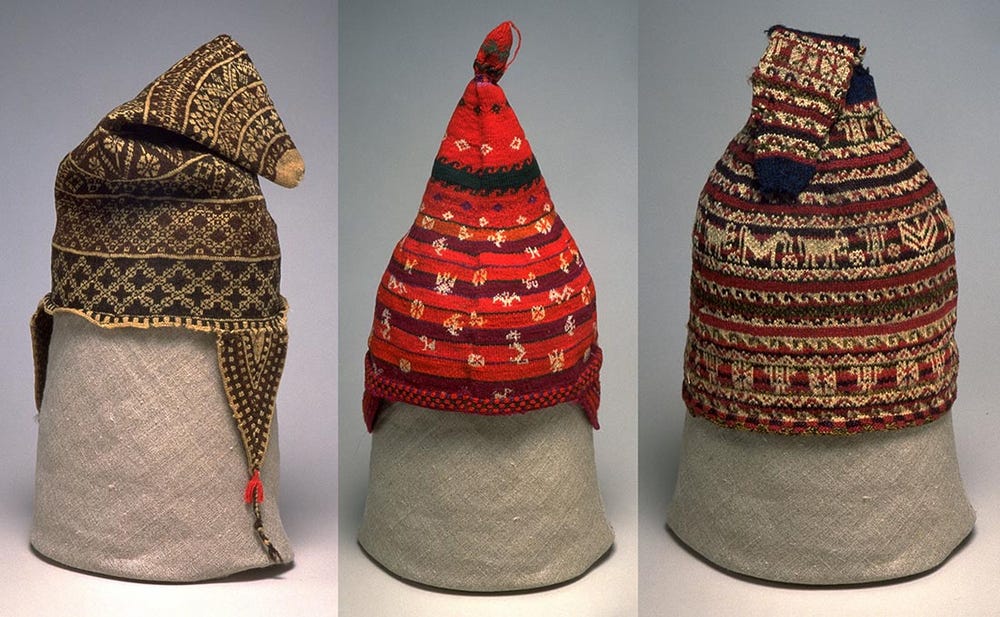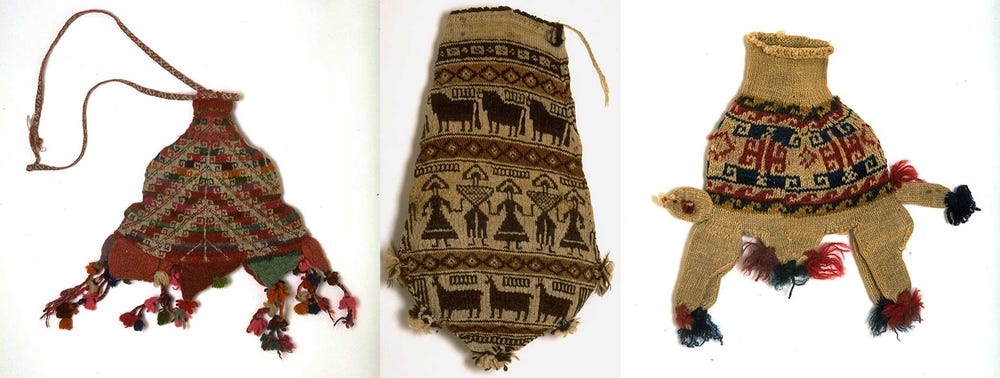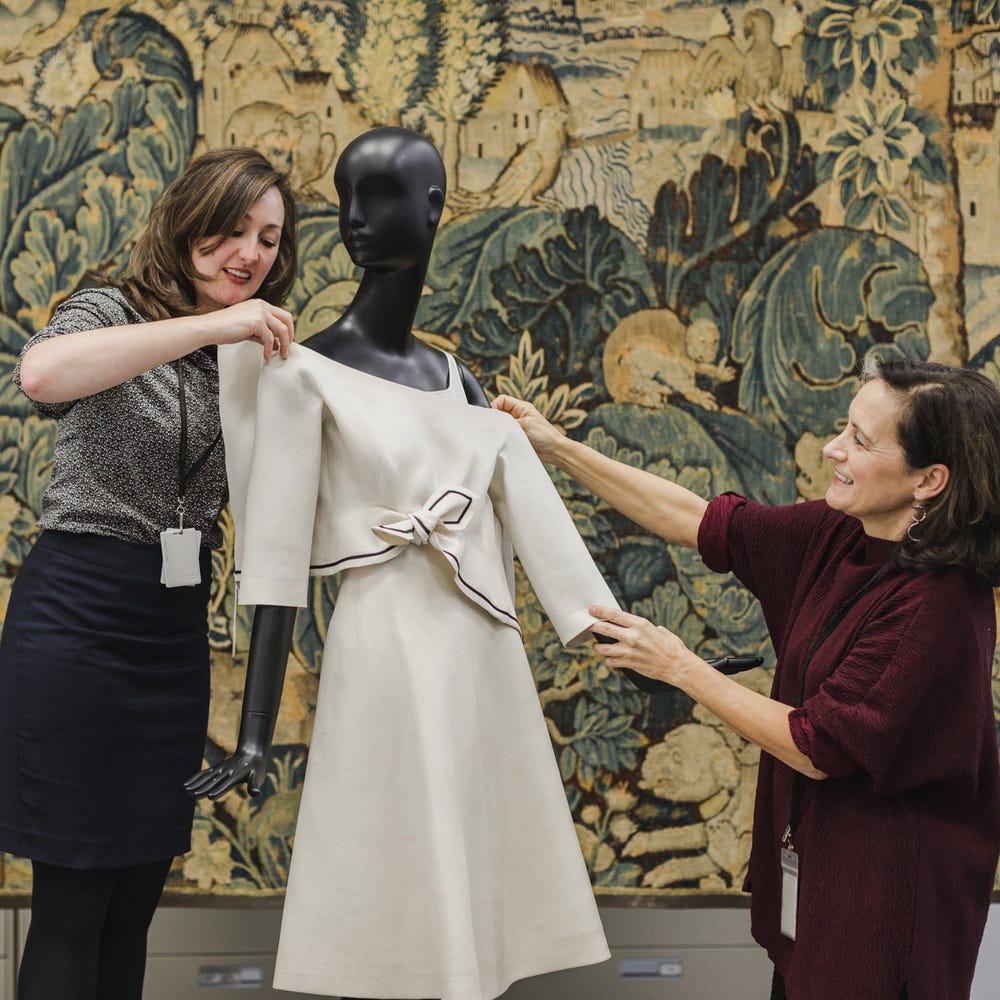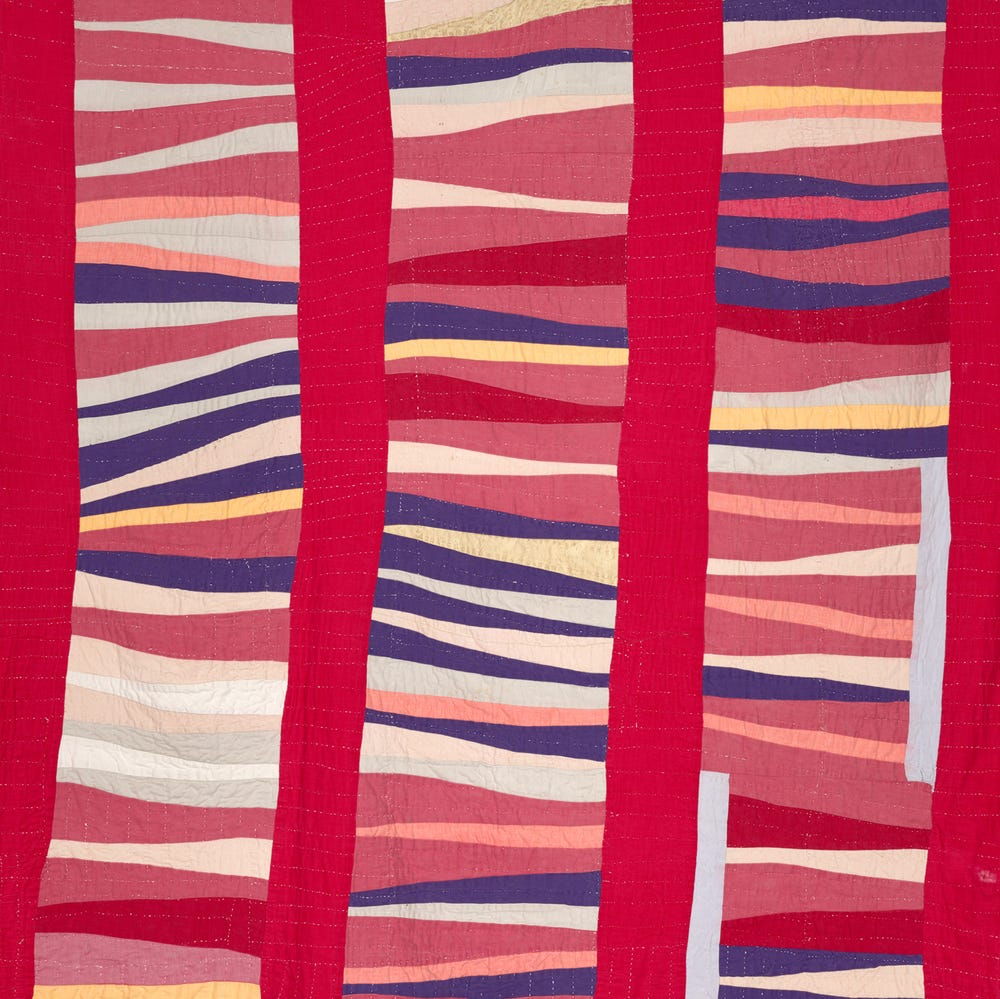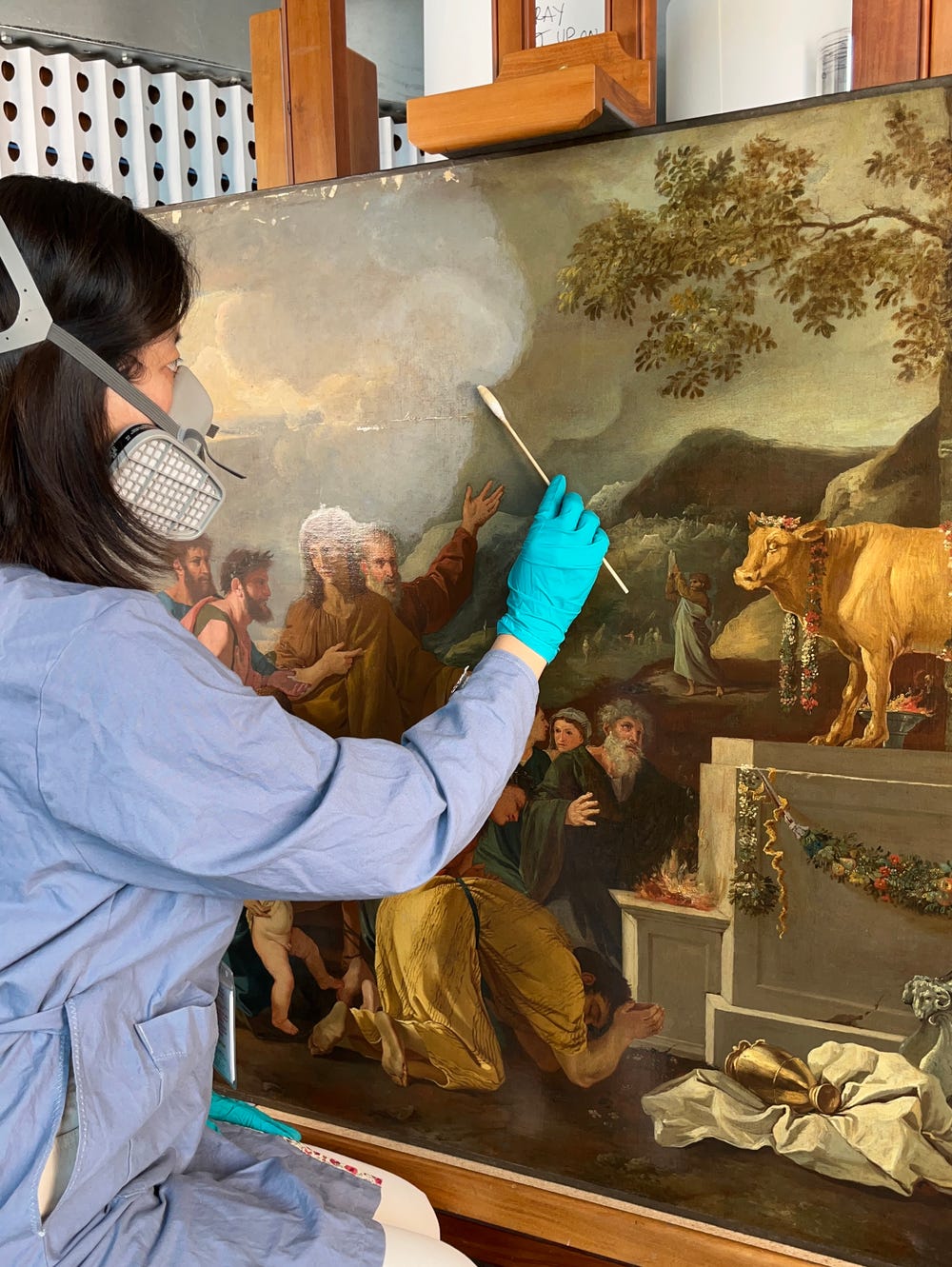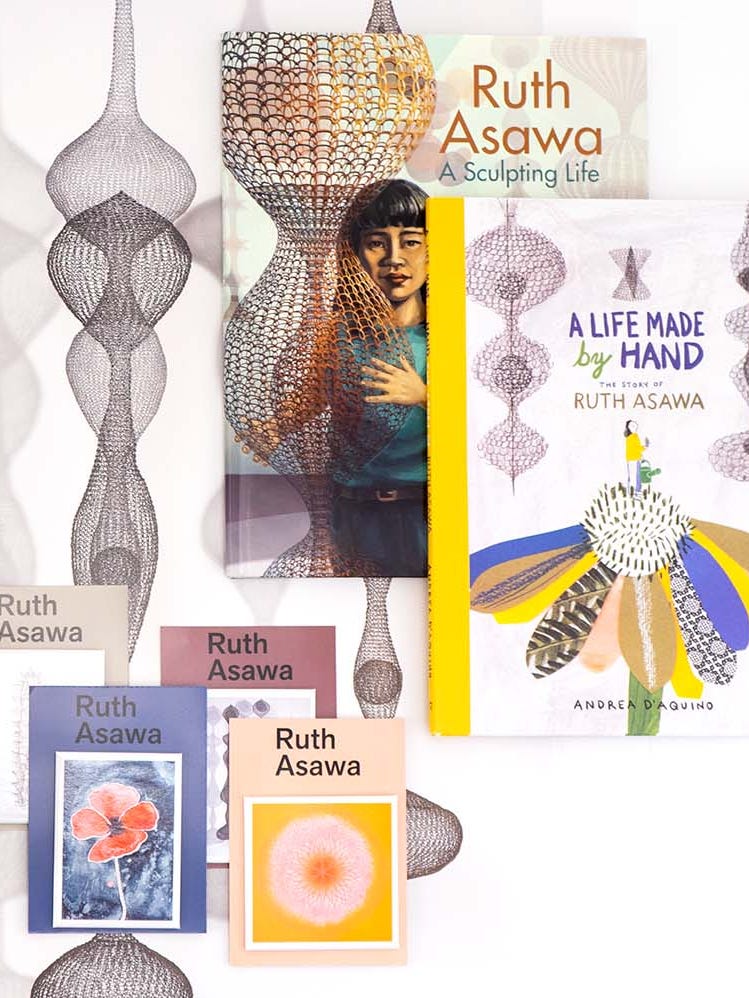It’s not just a simple knit 1, purl 2 project. Instead, it should carry the warning, “Requires Expert Supervision.” “It” is the knitting pattern derived from a Bolivian purse in the shape of a man in the Fine Arts Museums’ permanent textile collection.
The purse was analyzed by senior volunteer Jean Scardina, who has generously lent her textile expertise to the Textile Conservation Lab one day each week for over 30 years.
A comprehensive examination of the purse allowed Jean to literally document its construction stitch by stitch — resulting in an intricate knitting pattern. This type of minute study provided a wealth of information, as every detail was scrutinized. And, in order to ensure the pattern was correct, Jean created a reproduction, following in the footsteps of the original maker.
The first thing Jean did was determine the weight, spin and ply of the original yarn (Z2S). She also went to a great deal of trouble to match all 14 colors on the purse to available commercial yarns for use in the final reproduction.
Then the figure was analyzed, and both its shape and decorative patterning examined. In order to determine how so many different colors were incorporated into the original artifact, we used the lab’s small, digital, USB microscope: the Dino-Lite Pro. The purse could not be turned inside out, and the opening at the figure’s neck was too small to provide a clear view of the interior; however, it was wide enough to allow the Dino-Lite to be carefully slipped inside, allowing us to view magnified images on a laptop.
This showed that the various colors of yarn in each section were kept in play and carried throughout the area, floating along the interior surface until they were needed. This technique is called stranding by 20th century English-speaking knitters, and the latter will know that this produces a thicker textile with less elasticity than one knit using a single color at a time.
Taking this information about color and number of stitches, Jean used the software Stitch and Motif Maker to draft a digital pattern (caveat: the pattern does not reflect any of the dropped stitches present on the original artifact; these would have been unintentional and were not crucial to the shaping of the purse or its surface design).
Once the pattern was drafted Jean did a trial run, knitting a partial doll in simplified colors, to test two things: whether the gauge (9 stitches per inch) and overall shaping were correct. Since these factors are not affected by the decorative patterning, it was more time-effective to knit in a single color (brown), using blue lines to delineate the spacing of decorative motifs on the original.
After all her hard work gathering information about purse, and a successful proofing of her pattern, Jean was ready to make an exact replica (note: this will take an experienced knitter four to seven full days to complete).
Now for some technical details: she used a set of five double-pointed needles (size one) and knit in the round. The knitting was begun, or cast on, at the man’s neck (purse opening). It proceeded down the torso, reserving stitches for the later attachment of arms, and upon reaching the hips was then worked into two equal sections, one for each leg and foot.
Next, Jean returned to finish each arm and hand, followed by the head. The hat was crocheted separately and lastly, the eyes and mouth depicted with a few stitches of yarn.
Some of the most interesting things Jean found while analyzing the purse and creating the copy were:
- One foot has seven toes, while the other only has five
- Both heels are turned, the same technique used when knitting socks
- The head, feet and hands are partially stuffed with undyed wool fiber to make them more three-dimensional
- The hat is actually crocheted, not knit (two different yarn looping techniques)
We believe that that this purse was not knitted from a pattern but created from the knitter’s imagination, memory and expertise. Knitting has a long tradition in Bolivia — since its likely arrival with European explorers in the mid-1500s — as an easily transportable craft which allowed Bolivians to utilize indigenous wool sources and apply their love of detailed patterning to caps, leggings, socks, arm warmers and purses; this can be seen clearly in other Bolivian knit items in the Fine Arts Museums’ collection.
Bolivian knit caps in the Fine Arts Museums’ collection
This tradition of figural — both human and animal — knitted purses in the Andes stretches back centuries, and has been described in traveler’s accounts from the 1880s. The purse Jean examined was a more recent example made in the last century (ca. 1950 – 60), and according to donor Jeff Appleby, it was likely used by a woman to hold coins. In Bolivia, purses also often hold coca leaves and can be carried by men; they are generally worn rolled and tucked inside the owner’s clothing.
Other Bolivian knit purses in the Fine Arts Museums’ collection
